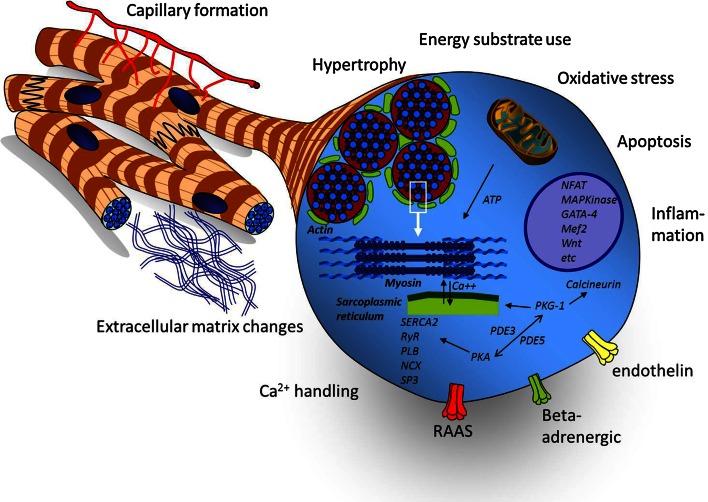Fig. 2.
Overview of the pathobiological changes in the abnormally loaded RV. Pathobiological hallmarks of the abnormally loaded RV. A myriad of genetic and epigenetic changes result in tissue damage-related processes (oxidative stress, fibrosis and apoptosis) and activation of (mal)adaptive processes on the tissue (capillary formation, inflammation) or cellular level (hypertrophy, energy substrate use, mitochondrial function and calcium handling). These processes are regulated by a complex network of signaling pathways related to contactile function, cellular growth, energy metabolism and neurohumoral signaling. ATP adenosine triphosphate, NFAT nuclear factor of activated T cells, MAPK mitogen-activated protein kinase, Mef2 myocyte enhancer factor-2, PKG-1 protein kinase G-1, PDE3/5 phosphodiesterase-type 3/5, PKA protein kinase A, SERCA2 sarcoplasmic reticulum Ca2 + -ATPase, RyR ryanodine receptor, PLB phospholamban, NCX sodium-calcium exchanger, SP3 transcriptional repressor SP3, RAAS renin angiotensin aldosterone system

